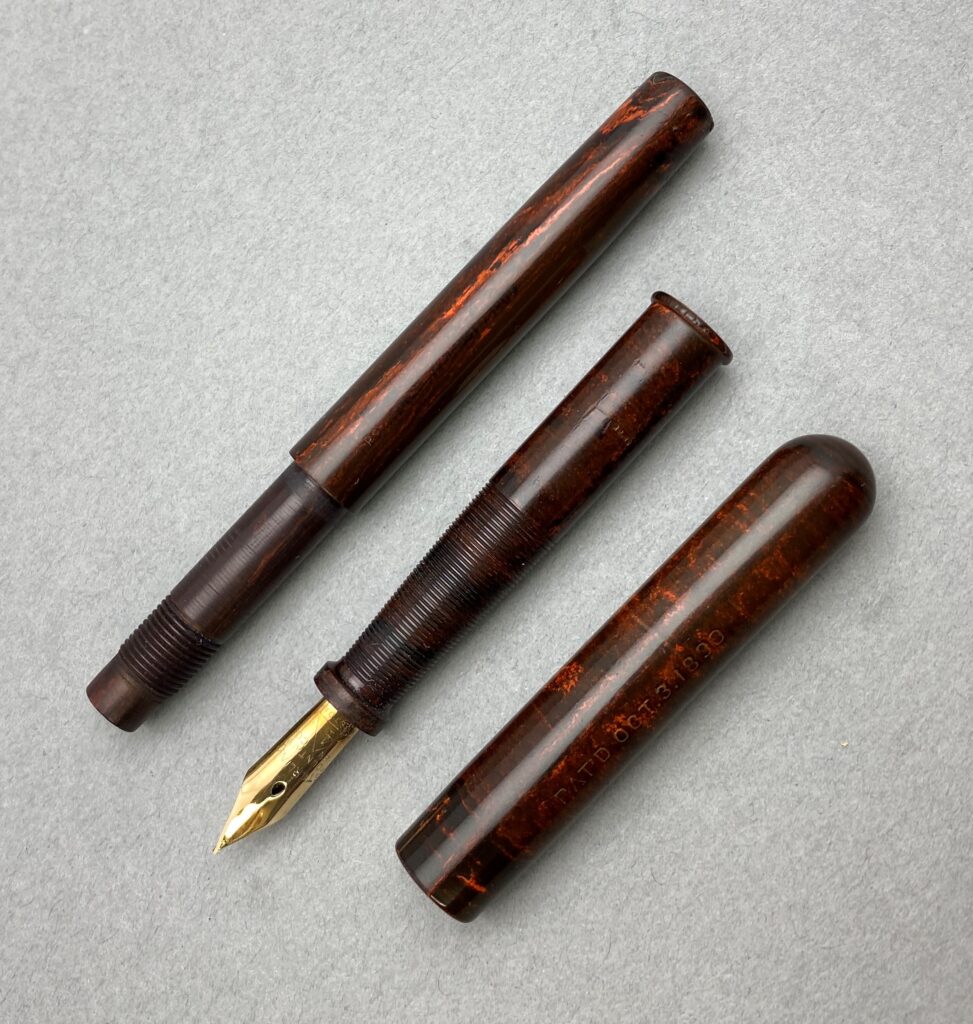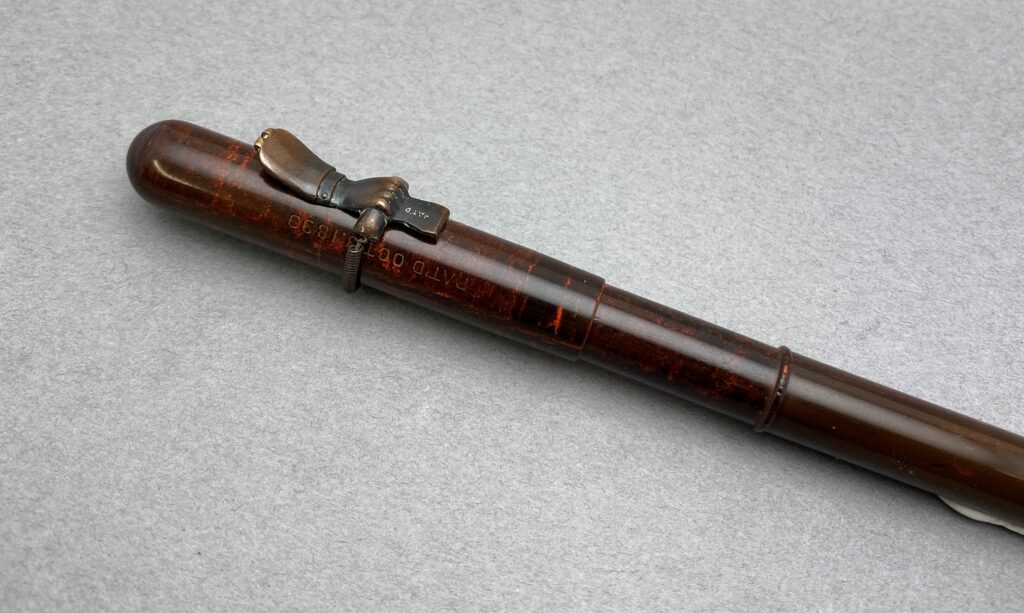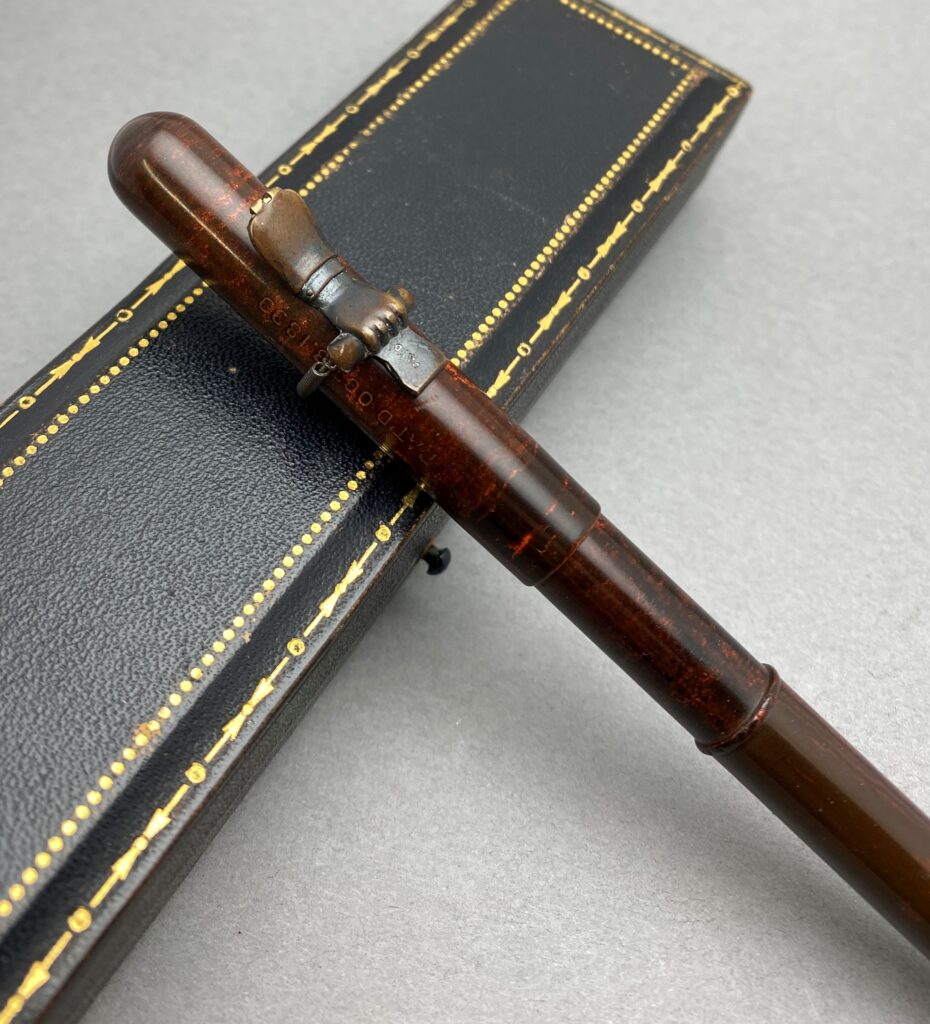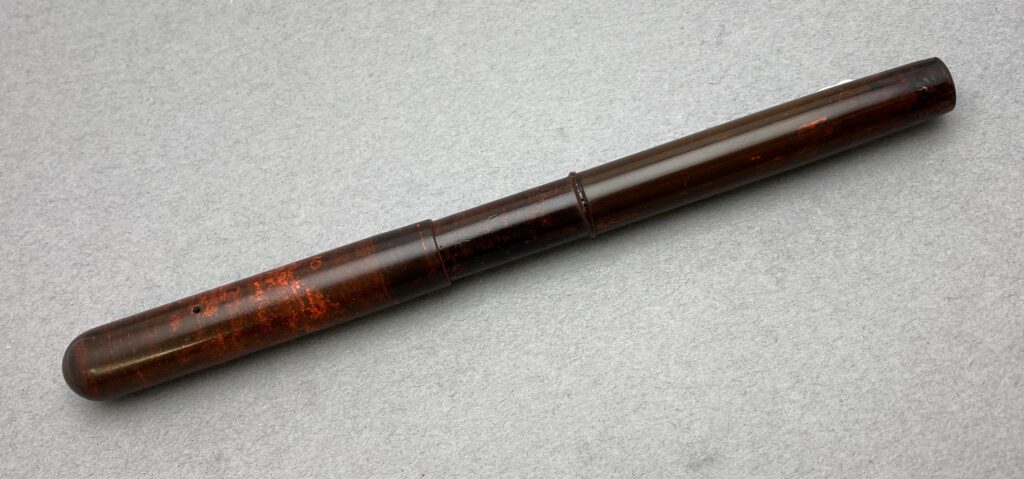The purpose of the middle joint pen is to move the joint away from the spot where you grip the pen with your fingers while you write. Sometimes, when using a standard dropper filled fountain pen, fingers on an incompletely or poorly sealed section joint would induce capillary action and draw ink onto the fingers. The pen would not leak at rest, but it would just manage to leak on your fingers when you gripped the pen. If that does not make sense, picture how the pen does not leak when uncapped on your desk, but when you touch the nib to paper, the ink is drawn out on to the paper. The joint can act as an unintended narrow slit if it is not fully sealed.
Here was a solution to inky fingers at the section joint. The location of the threaded joint is not moved, but rather a long extension of the gripping section covers the joint, not only making it unlikely that ink could reach the outer surface of the pen, but also the outer joint is no longer in a location that would typically be in contact with the writer’s hand or fingers.
Sterling and AA Waterman are two of the better known brands to utilize this feature, but it is seen on others as well.





